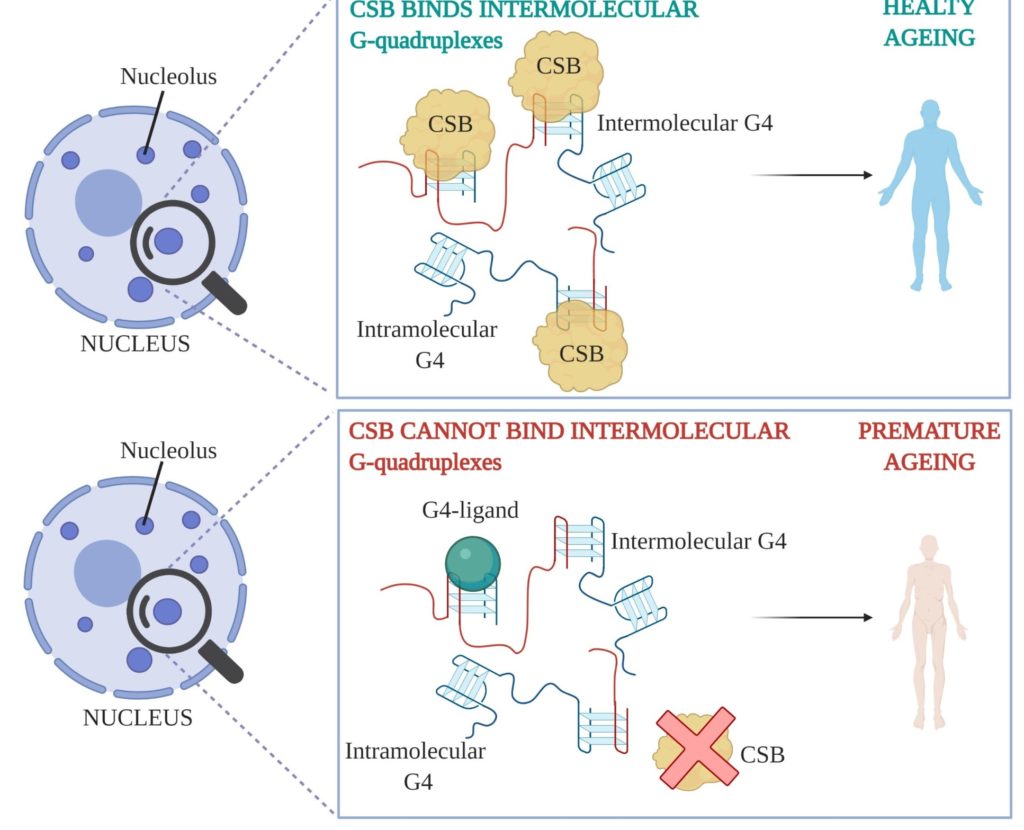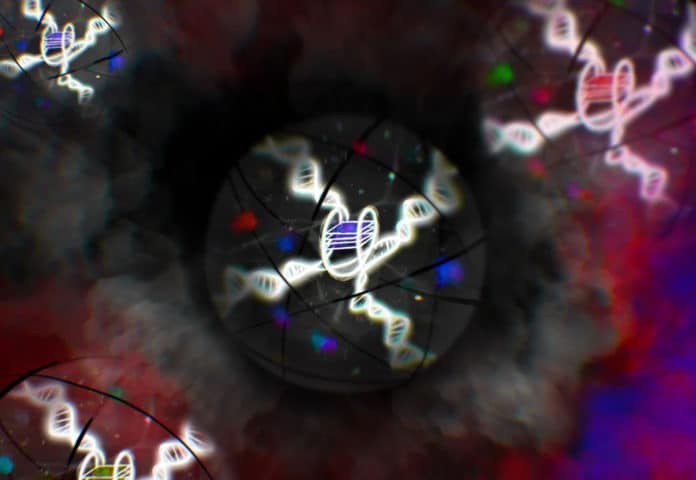DNA usually forms the classic double helix shape of two strands wound around each other.
Scientists observed four-stranded DNA interacting with molecules inside living human cells earlier this year. Known as G-quadruplex, the four-stranded DNA formed naturally in human cells. Despite their discovery in cells, their possible functions have not been discovered.
Recently, scientists from the Molecular Science Research Hub at Imperial College London have observed that the four-stranded DNA interacts with a gene that causes Cockayne Syndrome when faulty. These special G-quadruplexes arise when distant parts of DNA interact.
Normally functioning CSB proteins do not cause any ill effects. Cockayne syndrome is a rare and fatal premature aging disorder caused by the mutations of the gene that produce CSB protein.
Scientists noticed that CSB proteins with mutations could not interact with the long-range G-quadruplexes. Well, the reason behind this remains unclear, but the study links these long-range DNA G-quadruplexes with the functional role of CSB.
The team also demonstrated that the CSB could potentially use the G-quadruplexes to link distant portions of the DNA.

Lead researcher Dr. Marco Di Antonio from the Department of Chemistry at Imperial said: “Our genomic DNA is more than two meters long but is compressed into a space only a few microns in diameter. It shouldn’t, therefore, be a surprise that there are ways the long-range looped structures are leveraged to compress DNA in more complex interactions than we imagined.
“There is still so much we don’t know about DNA, but our results show that how and where G-quadruplex structures form affects their function, making them more important biologically than previously thought.”
However, scientists haven’t yet determined the result of the interaction. According to a study, cells without CSB have difficulty processing the DNA around sequences with the potential to form G-quadruplexes.
Scientists hope that further study of the mutated CSB gene might reveal the specific biological function of these long-range DNA structures.
The first author of the study Denise Liano, from the Department of Chemistry at Imperial, said: “There is currently no cure for Cockayne Syndrome. But with further study into how G-quadruplexes and the gene behind Cockayne Syndrome interact, we can learn details that will hopefully allow us to discover therapeutic tools, such as designer molecules that can regulate the interaction and fight back against the premature aging caused by the disease.”
Journal Reference:
- Denise Liano, Souroprobho Chowdhury, Marco Di Antonio. Cockayne Syndrome B Protein Selectively Resolves and Interact with Intermolecular DNA G-Quadruplex Structures. Journal of the American Chemical Society, 2021; DOI: 10.1021/jacs.1c10745
